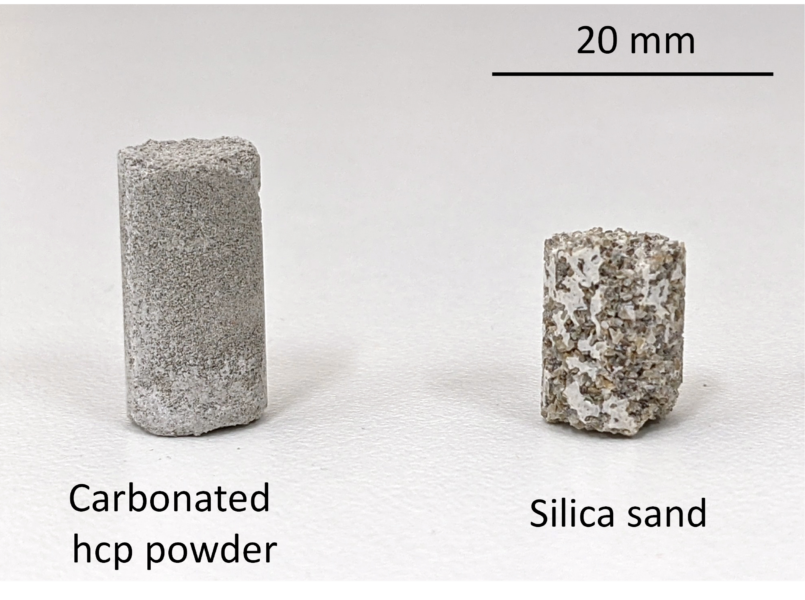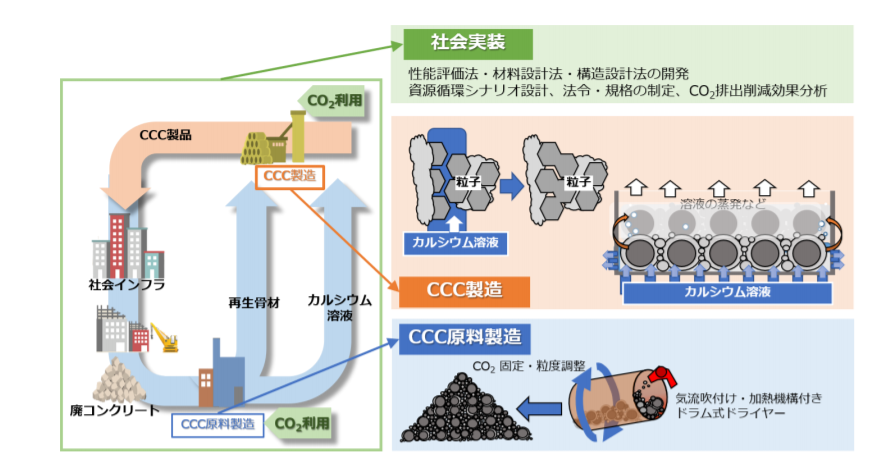

東大:廃コンクリとCO2で新建材:CCC(動画):
Tokyo Univ: Materials from waste concrete/CO2:Calcium carbonate concrete:
东京大学:用废弃混凝土和二氧化碳制成的新型建筑材料:碳酸钙混凝土
世界のCO2排出量:
世界の二酸化炭素排出量の7%は、セメント製造及び使用により発生しています。
- コンクリートの主成分は、セメントです。
- コンクリートは、建材として非常に有用で、
- 今後も必要とされるでしょう。
セメント製造上の問題点:
セメントを製造すると、その過程でどうしてもCO2が排出されます。
建設業界では、CO2排出量の削減が大きな課題となってきました。
丸山氏らは、「逆に大気中のCO2を活用して、コンクリートの代替品を作れないか」を考えました。
東京大学大学院
丸山 一平教授東京大学の研究チームは、
- 環境への懸念に対処するため、
- 廃コンクリートとCO2から、
- 新しい建材を製造できる、
CO2の削減技術を開発しました。
研究の詳細:
10月8日付の科学誌『Journal of Advanced Concrete Technology』に掲載されています。
ナゾロジー
https://nazology.net/archives/97883
A concrete solution | A new kind of concrete could reduce emissions from the construction industry.
Calcium carbonate concrete
is made from waste concrete and carbon dioxide from the air or industrial exhaust gases.It shows promise as a future construction material, especially in places where natural resources are limited
A new way to reduce emissions levels caused by concrete use
has been proposed and proven to work by Professor Ippei Maruyama and C4S (Calcium Carbonate Circulation System for Construction) project manager Professor Takafumi Noguchi, both from the Department of Architecture at the University of Tokyo.
They have found a way
to take waste concrete and captured carbon dioxide, and combine them in a novel process into a usable form of concrete called calcium carbonate concrete.
Inspired by the way some aquatic organisms harden into fossils over time,
Maruyama wondered if the same process that forms hard calcium carbonate deposits from dead organic matter could be applied to concrete.
Calcium is essential for the reaction between cement and water to form concrete,
and Maruyama saw this as an opportunity to investigate a less carbon-intensive way of performing the same function.
The University of Tokyo
https://www.u-tokyo.ac.jp/focus/en/press/z0508_00190.html#
A New Concept of Calcium Carbonate Concrete using Demolished Concrete and CO2
https://www.jstage.jst.go.jp/article/jact/19/10/19_1052/_article